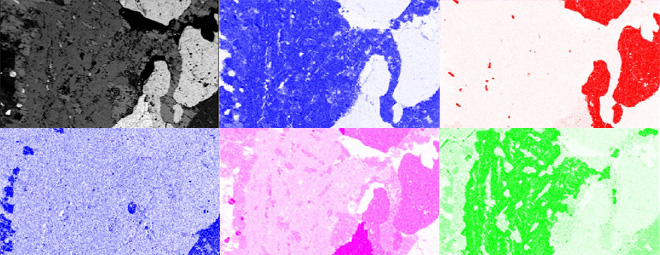Geological & Mining
Microtrace has built an expertise and wealth of experience in the application of polarized light microscopy (PLM) and optical crystallography to the study of rocks, minerals and glasses, analytically ranging from the identification of unknown minerals (and gems) to the determination of specific optical properties. Our capabilities and analytical expertise extend well beyond PLM and include a wide range of other microanalytical methods derived from, or applicable to, the study of geological substances and industrial minerals, including high resolution scanning and transmission electron microscopy, Raman microspectroscopy, X-ray diffraction, X-ray fluorescence microspectroscopy, and infrared microspectroscopy.
Forensic Science
Although many of our higher profile cases involve the analysis of forensic soil samples and the task of geolocation (identifying a specific location or activity based on the composition of a dust or soil sample), a subject that has fascinated Microtrace scientists for over four decades, our applications of microscopy and microchemical analysis are also used to support a range of other geological and mineralogical questions. Microtrace scientists have conducted a wide range of internally supported research on topics ranging from spindle stage characterization to heavy mineral varieties to clay mineralogy. Some of this work has been published in articles, including a chapters on heavy mineral analysis in forensic soil samples and the first article on geographic sourcing of dust samples. Microtrace scientists also sit on national and international working groups on forensic geoscience.
Industrial Geology
Through traditional and modern microanalysis, Microtrace scientists have provided support for a wide range of geological investigations ranging from the identification of precipitates in deep wells, to the characterization of ores, coal, coke, and tailings.
Litigation
We have provided litigation support and expert consulting in a variety of matters including dust from processing operations, mine tailings, and asbestos analysis.
Research
Over the years, scientists at Microtrace have conducted fundamental research into geological topics ranging from the study of radiation effects in minerals, to the identification and behavior of uranium minerals and alteration products, and the neutronics of a naturally occurring fission reactor (and its fission products). The latter was conducted based on a detailed microscale study of trace elements and isotopic analysis. Using high resolution electron microscopy, a Microtrace scientist was the first to observe and publish the appearance of so called “invisible gold” in Carlin-type deposits.
How May We Help You?
Contact usto discuss your project in more detail.








